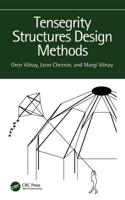Publisher's Synopsis
The aim of this book is to explore the significance of the concept of 'monument' in the context of the Achaemenid Empire (550-330 BC), with particular reference to the Royal Ensemble of Persepolis, founded by Darius I and built together with his son Xerxes. While Persepolis was built as an 'intentional monument', it had already become an 'historic monument' during the Achaemenid period. It maintained its symbolic significance in the following centuries even after its destruction by Alexander of Macedonia in 330 BC. The purpose of building Persepolis was to establish a symbol and a common reference for the peoples of the Empire with the Achaemenid Dynasty, transmitting significant messages and values such as peace, stability, grandeur and praise for the dynastic figure of the king as the protector of values and fighting falsehood.
While previous research on Achaemenid heritage has mainly been on archaeological and art-historical aspects of Persepolis, the present work focuses on the architecture and design of Persepolis. It is supported by studies in the fields of archaeology, history and art history, as well as by direct survey of the site. The morphological analysis of Persepolis, including the study of the proportions of the elevations, and the verification of a planning grid for the layout of the entire ensemble demonstrate the univocal will by Darius to plan Persepolis following a precise initial scheme. The study shows how the inscriptions, bas-reliefs and the innovative architectural language together express the symbolism, values and political messages of the Achaemenid Dynasty, exhibiting influence from different lands in a new architectural language and in the plan of the entire site.










